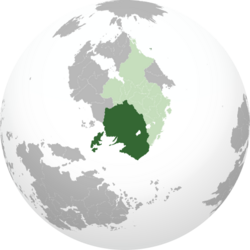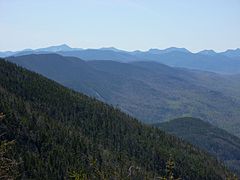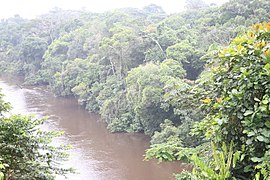Terazta
The Republic Of Teŕazta Respublika Teŕazta | |
|---|---|
Motto: Oŕemuš, Vivamuš, Gŕatiamuš Let us pray, Let us live, Let us give thanks | |
Anthem: Teŕazta, Laus Tibi Media:TeŕaztaNathionalAnthem.mp3 | |
 Location of XXX (dark green) In XXX (gray) | |
| Capital | Aureia |
| Largest city | Palmero |
| Official languages | Your language Your language Teŕatzan |
| Ethnic groups | Teŕaztanii, Caphiric, |
| Religion | Your religion |
| Demonym(s) | Taraztani(noun) XXXan (adjective) |
| Government | Classic Republic |
• Princeps Senatoris de Terazta | Scipio Gauius Publius |
| Legislature | The Senate Of The People Of Teŕazta. |
| Your upper house | |
| Your lower house | |
| Establishment | |
• An event | 878ad |
| Population | |
• Estimate | Your population |
• Census | 50,567,776 |
| GDP (nominal) | estimate |
• Total | Your GDP = GDPPC x Population (This is calculated for you after first entry) |
• Per capita | Your GDP PC |
| Gini | Your gini coefficient Error: Invalid Gini value |
| Currency | Sasterio (RTS) |
| Driving side | right |
Terazta, officially the The Republic Of Teŕazta, is a country in a mountainous region of Sarpedon. It is neighbored by Caphiria, Urcea, and Lariana.
XXX is a member of the League of Nations.
Etymology
The nation of Teŕazta sits in a highly mountainous region of Sarpedon known as “Xelphia”. in the early history of the region slaves, prisoners and the poor of the First imperium were sent to this area, referred to by it's inhabitants as “Terra Resta" which translates as “The land that remains” or “The leftover land.” It's Poor, rocky soil yielded little wheat and made farming difficult. Over time this insult for the land grew to become it's name and over millenia “Terra Resta” would replace “xelphia”. And would eventually become “Teŕazta” is the country's language.
History
First Era
The region of Xelphia began to see the arrival of Adoneri Peoples beginning in the 18th century, BC. The best recorded of these peoples was the Polentii civilization, a People who built their villages high above the ground within mountains and oceanside cliffs.
Excavation have shown that the Polentii built small replica huts out of the ashes of their dead which they would mix with clay and inscribe the name of the dead. With these they would contruct small villages on altars in their homes, engaging in a sort of ancestor worship.
The Polentii civilization would be asimiliated into The First Imperium in the 3rd century BC after a long decline.
Second era
What were the first political structures of your country? Did it have any very early rivals or was it controlled by a foreign country?
Third era
What were your country's first major moves on an international level?
Fourth era
Did your country ever have a period of significant decline or internal struggle?
Fifth era
Was your country subject to imperialism later in its life, or was it an imperial power?
Sixth era
How did the 20th century affect your country?
Geography
-
First lovely location
-
Second lovely location
-
Third lovely location
-
Fourth lovely location
-
Fifth lovely location
-
Sixth lovely location
What is the general explanation of how your country exists within the world?
Climate and environment
Is your country hot or cold?
Government and Politics
How is your country ruled or governed?
Executive
Who is responsible for making high level choices in your country? Does it have a President or King?
Legislative
Who decides the laws for your country? Is there political parties and a legislature?
Federal subdivisions
How is your country divided? Are there states or provinces, or is the country directly governed from the capital as a unitary state?
Politics
What political factions exist? Who has ruled predominantly?
Law
What kind of laws and legal system does your country employ?
Demographics
What kind of people live in your country?
Ethnicity
What ethnic groups make up your country?
Language
What language or languages do your country's people use? Are there any previously used languages no longer common? Are these languages native to your country or shared with another?
Religion
Religious affiliations in the XXX (20XX)
What do your country's people believe in religiously, if anything? How many groups are there?
Education
Education among the Taŕatzanii is largely done by parents in private homes or by private tutors.
Culture and Society
What do your people do, and what are they like?
Education
What is your country's education system like? How do the schools work? What do people think about education?
Attitudes and worldview
How do your country's people view life?
Kinship and family
How are families or kinship groups structured in your country?
Cuisine
Teŕaztan Cuisine is largely defined by it's Geography. During the earliest days it's People have struggled to grow food in the region and relied heavily on Pulses (Lentils, peas, beans and fava beans) root vegetables such as Carrots, parsnips, turnips and beets, and Less "Noble" grains such as Spelt, Barley and Rye.
The people of Teŕazta have a strong tea drinking culture, first introduced by Yanubani traders in the 8th century AD along with melons, cucumbers and sugar
Chaecium culture
Tea time, known as "chaecium" in Teŕatzan, is akin to a siesta time for the people of the country and is a 3 hour long affair of snacking, tea drinking and relaxing. Tea was
Beginning around 2pm and ending around 5 pm, the lady of the household will brew enough tea for the entire time, preparing a plethora of small snacks and games for those taking part will enjoy. Common snacks are:
Miglae: small steamed buns filled with pistachio and almond paste, flavored with lemon or sumac and glazed with a glaze of powdered sugar, rose water and a colorant (usually saffron)
Glirae: rolls reminiscent of mice and filled with anything from pastry cream to ground beef and cheese. Typically fried.
Plasenta: a cheese cake made of eggs, goats cheese, sugar and baked with a shell of slivered almonds. Typically flavored with almond liquor
Dulcae domae: dates stuffed with ground nuts, encased in a caramel and seasoned with some salt and spices.
Glabi: round donuts, made of spelt flour and filled with cheese then fried and rolled in honey and coated with cinnamon and Poppy seeds.
Religion
What do your people believe? Rather than demographics, as above, think about how important religion is to your people and their view about their own and other religions. What is the relationship between the prevailing view and minority religious groups? Is it an official religion, and do any laws exist about free worship?
Arts and Literature
What type of art do your people make? Do they have a tradition of painted art, well-crafted television shows, or great music?
Sports
Does your country have any major sports leagues? What types of sports are played, both professionally and for fun by your country's people?"
Symbols
Are there any prominent symbols which are well known to represent your country?
Economy and Infrastructure
How does your country's economy work?
Industries and Sectors
What are the largest parts of your economy in terms of what they do?
Currency
What exchange systems are used within your country's economy?
Healthcare
How do people in your country procure medical care? How is it paid for?
Labor
How is labor organized within your country? Are there any social institutions or unions which deal with labor concerns?
Transportation
How do people in your country get around? Is there a major highway system as well as sea- and airports?
Energy
What type of energy keeps your nation going? Are you renewable or use fossil fuels, and if you are renewable, how recently did your country transition?
Technology
How advanced is your country? Is it an innovator, or does it largely import new developments?
Military
How large is your country's military? Is it large but poorly equipped or small and elite? Does your country have a martial tradition?







